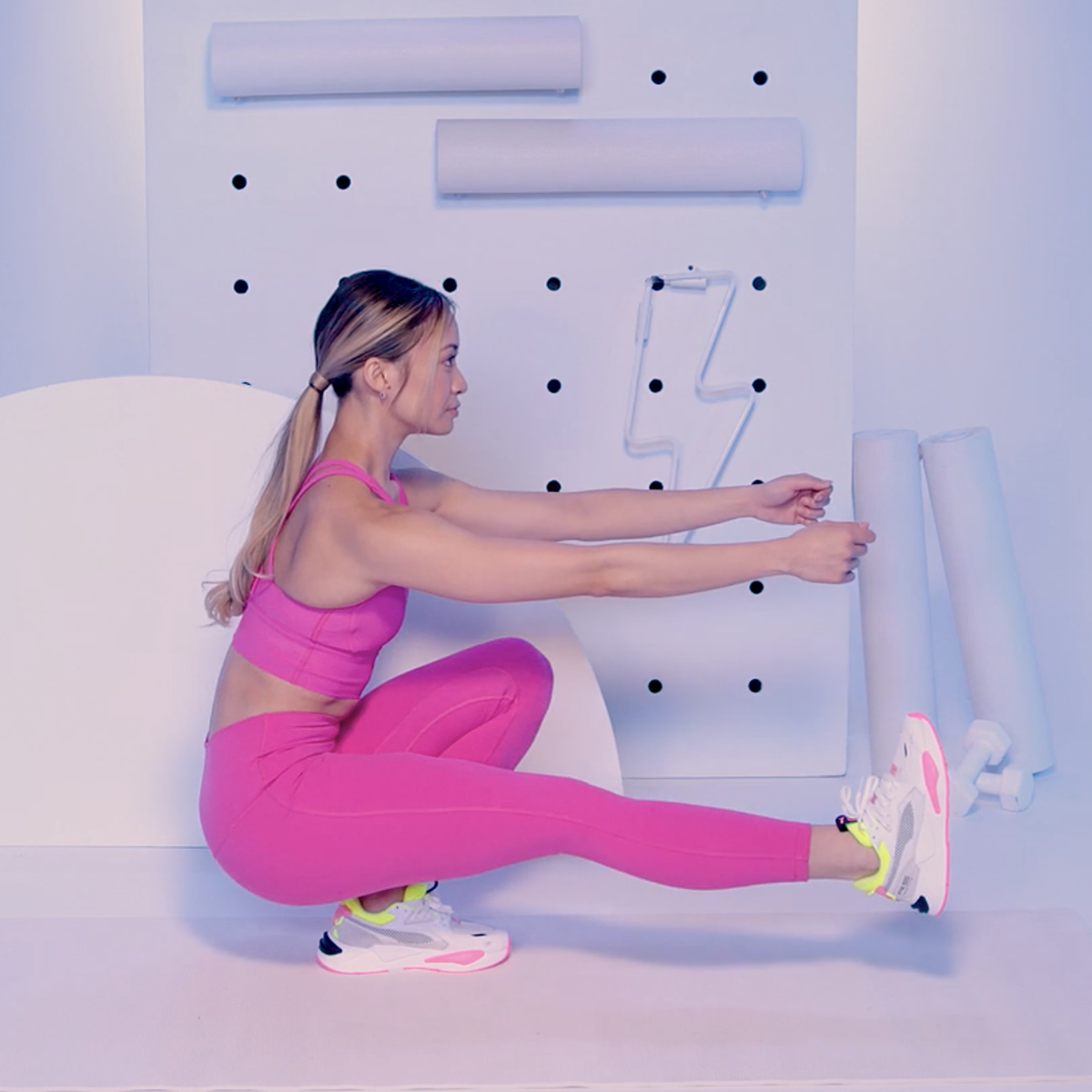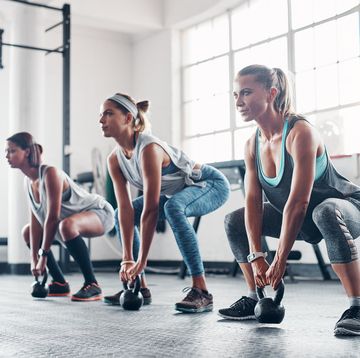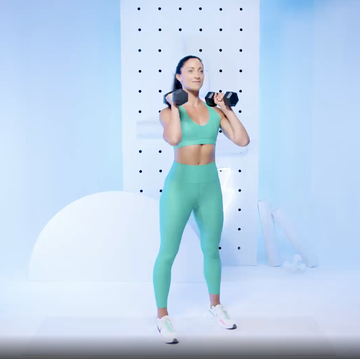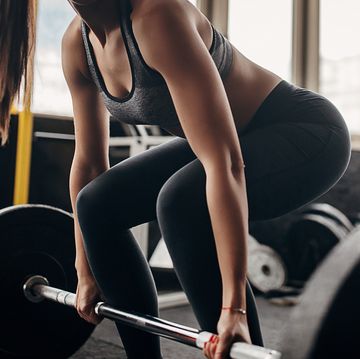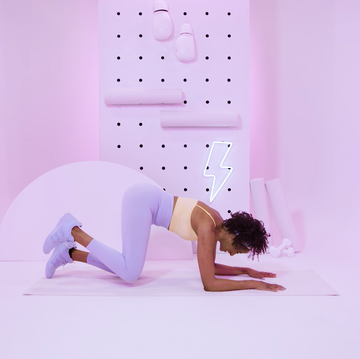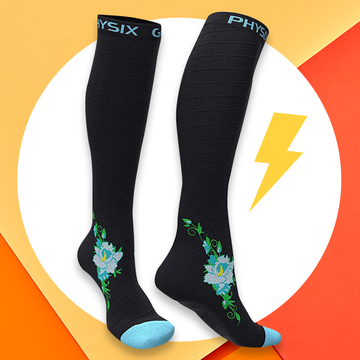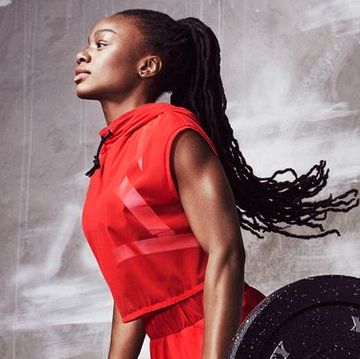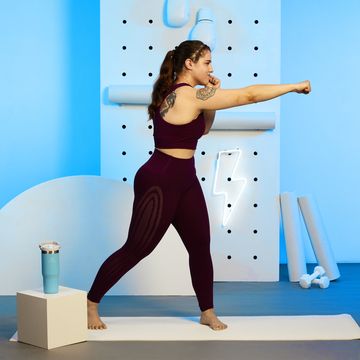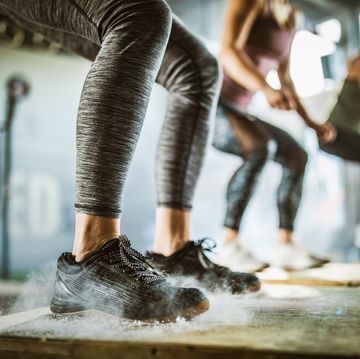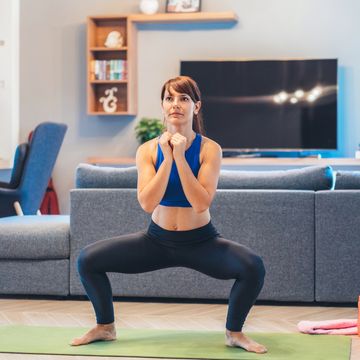A basic bodyweight squat may seem like nothing to sweat over. The movement is relatively simple to pick up since you perform it in your everyday life, whether you’re tying your shoelaces or picking up your dog’s toys. But once you try to do the exercise with one leg lifted off the floor—a pistol squat—the fear factor and degree of challenge explodes.
“A pistol squat requires a lot more strength, stability, flexibility, and, most of all, mobility to perform safely and correctly,” says Bianca Vesco, CPT, a NASM-certified personal trainer and fitness instructor in Nashville. “After all, you are using one leg to move your entire body weight as opposed to two.”
Meet the expert: Bianca Vesco, CPT, is a NASM-certified personal trainer and fitness instructor based in Nashville.
More From Women's Health

The benefits of the pistol squat make it well worth the effort. The pistol squat works practically every major muscle group in your lower half, including the glutes, hamstrings, calves, quads, abductors, and adductors. Plus, it can help you build the strength, balance, and mobility necessary to move optimally in your daily life and keep injuries at bay.
If those perks motivated you to try your leg at the pistol squat, keep reading for a step-by-step breakdown of how to do the movement with perfect technique and expert-approved pointers that will help you work your way up to the all-star exercise.
How To Do A Pistol Squat
- Stand with feet hip-width apart, shoulders rolled down and back away from ears, and core engaged, which will help stabilize spine and keep torso upright. (Brace stomach as if someone is about to punch you in the gut.)
- Spread right foot as wide as possible and root into the floor, then shift body weight into right leg and lift left foot off the ground. Then, extend left leg out in front of body as far as possible.
- Extend both of arms straight out in front so hands are in line with shoulders. (You can either keep arms extended and hands free, hold onto the outside of left foot with left hand, or grasp left foot with both hands.)
- Keeping core engaged, torso upright, and chest proud, take an inhale. Then, slowly bend right knee and send hips backward to lower butt close to the ground. Allow right knee to fall forward over ankles and toes, keep right heel firmly planted on the ground, and ensure left leg is lifted off the floor throughout the entire movement. Avoid excessively rounding your spine, which can contribute to poor posture over time.
- Continue to bend right knee and slowly lower to the ground until right hamstring is touching right calf muscle. Spine should remain in a neutral position.
- On an exhale, engage glutes and push through right foot to rise out of the squat, straightening right leg and returning to standing. That’s 1 rep. Repeat on the opposite side.
Common Pistol Squat Mistakes
The pistol squat is incredibly tricky, and a lot can go wrong with your technique, which can lead to muscle and joint strain, says Vesco. As you attempt to do your first pistol squat—or perfect the reps you’re already doing—avoid making these common missteps.
- Advancing to an unassisted pistol squat too soon. “Progressing any movement too quickly before your body adapts is an easy way to get injured and train your body in an incorrect or unhealthy movement pattern,” says Vesco. Before you attempt to work through the full range of motion without any aids, make sure you have fully nailed down modified variations, such as the pistol squat with a bench or a TRX system.
- Allowing your heel to raise off the floor. As you lower down into your squat, your heel on your working leg might lift off the floor — a sign that you’re short on ankle mobility, says Vesco. “Having your heels off the ground for any squat variation puts more strain on your joints, most specifically your knees, and increases your chances of hurting your lower back,” she explains. To help keep your foot flat, practice ankle mobility drills and incorporate them into your pre-workout routine.
- Rounding your spine too much. Excessive rounding of the spine throughout your pistol squat is another major no-no, says Vesco. This slip-up may be caused by a lack of core strength, hip mobility, or spinal mobility, she explains. “If your hip joint isn’t allowing the space for flexion in your pistol squat, your spine is going to bring your chest closer to your leg to close that gap." If you’re struggling to maintain a neutral spine, work on your mobility and core strength in other aspects of your routine.
Pistol Squat Benefits
Achieving a pistol squat is no easy feat. Once you add it into your workout routine, you’ll see improvements in your balance, mobility, and unilateral strength.
- Correct muscle imbalances. As a unilateral exercise, the pistol squat works one side of your body at a time. Doing that helps you pinpoint and ultimately correct muscle imbalances, says Vesco. It’s natural for one side of your body to be a bit stronger than the other, but significant disparities can lead to movement compensations and increase your risk of injury, according to the American Council on Exercise (ACE). The pistol squat, however, will help your leg muscles become equal in strength. “Pistol squats specifically are one of the most challenging unilateral exercises,” she adds.
- Improve ankle strength and mobility. Incorporating the pistol squat and its modified variations into your usual fitness routine can help improve your ankle strength and mobility; you’ll need strength in the joint to support all of your body weight throughout the entire movement, as well as mobility to sink into the deep-squat position, says Vesco. And both qualities are required to safely step up stairs and even walk properly. Research suggests that reduced ankle mobility can change knee joint kinematics, and it’s also been linked with plantar fasciitis, shin splints, stress fractures, ankle sprains, and Achilles tendinitis, according to ACE. Essentially, “strong ankles mean less room for injury and a much easier life,” says Vesco.
- Test and enhance balance. To prevent yourself from toppling over as you lower in and out of each squat, you’ll need to maintain your balance, says Vesco. Training your balance can help keep you injury-free in your daily life, no matter your age. If you routinely practice one-leg balance and accidentally step one foot off a curb while on a walk, for example, you’ll be better equipped to stay upright and keep your body off the ground. “Think about how much easier it will be to move around life on two legs once you’ve mastered only using one,” says Vesco.
How To Work Up To Pistol Squats
While there’s no shame in shooting for the stars and attempting pistol squats, don’t expect to nail the challenging move on your very first try. In order to perform your reps properly, you’ll first need to establish strength in your legs, improve balance, and increase mobility in your ankles, knees, and hips so your joints are ready to support you through the move, says Vesco. “My biggest advice is to make a plan and be patient,” she adds.
Here's how Vesco recommends working up to a pistol squat. Practice a few (or all) of these supporting exercises and modified variations in each of your lower-body workouts. Trust, they’ll ultimately help you perform the real deal.
Half-Kneeling Ankle Rock
Boost your ankle mobility. The ankle on your squatting leg needs to be mobile enough that your entire foot can stay flat on the floor in your deep squat, says Vesco. “Generally speaking, tight ankles can be a result of tight feet and calves, which can be easily mobilized through soft tissue work such as foam rolling or myofascial release,” she notes.
How to:
- Start in a half-kneeling position on the floor with left knee resting on the floor under left hip and left calf extended behind you.
- Place right foot flat on the floor in front with right knee bent to a 90-degree angle. Rest both hands gently on right thigh.
- Keeping hips square, slowly drive right knee forward, keeping it in line with toes, as far as is comfortable. Avoid driving knee inward, and make sure to keep your right foot flat on the ground throughout the entire movement.
- Pause, then slowly press through right foot to drive knee back to the starting position. That’s 1 rep. Repeat on the opposite side.
Cossack Squat
Improve hip mobility. Just like ankle mobility, good hip mobility is a must for the pistol squat. “Ideally, you should be able to pull your knee into your ribcage [while] standing comfortably, but there are workarounds,” says Vesco. Any hip mobility drill, such as the world’s greatest stretch, standing hip controlled articular rotations, cossack squats, or controlled table-top hip circles, will do the trick, she adds.
How to:
- Stand with feet one to three steps wider than shoulder-width apart, so legs form a wide “V” shape. Turn toes slightly outward, then extend both of arms in front of chest. Engage core and draw your shoulders down and back.
- As you inhale, shift bodyweight to right side.
- Then, sit back into hips and bend right knee to lower into a squat, keeping spine neutral. Continue lowering until right thigh is parallel to the floor, or as deep as is comfortable. Left leg should remain fully extended out at your side and both feet should rest flat on the floor.
- At the bottom of your squat, exhale and push through right foot to straighten right leg and press back up to starting position. That’s 1 rep. Repeat on the opposite side.
Squat
Strengthen lower body. Being able to squat with both feet on the ground comfortably and with strength is a necessity if you want to build up to the pistol squat, says Vesco. The exercise helps to strengthen all of the lower-body muscles that are called upon during the single-leg exercise.
How to:
- Stand with your feet hip-width or shoulder-width apart, whichever is most comfortable, your toes pointing forward, and your hands clasped in front of your chest. Engage your core and draw your shoulders down and back.
- On an inhale, sit back into hips as if you were going to sit in a chair and bend both knees to slowly lower into a squat. Continue lowering body until thighs are parallel to the ground or as far as is comfortable. Make sure to keep spine neutral and gaze forward.
- Pause, then on an exhale, push through all four corners of feet to straighten legs and return to standing. That’s 1 rep.
Single-Leg Deadlift
Boost balance. The single-leg deadlift not only helps you create essential lower-body strength, but it also gives you the chance to improve your balance before trying a pistol squat.
How to:
- Stand with your feet hip-width apart and your arms hanging at your sides, holding a dumbbell in each hand. Your palms should face your body. Engage your core and draw your shoulders down and back.
- Shift your body weight into your right leg, bend your right knee slightly, and lift your right foot off the floor.
- On an inhale, slowly hinge at your hips to lower your torso to the floor in front of you while simultaneously allowing your left leg to sweep back behind you. Keep your lats engaged and arms hanging at your sides, and ground through your right foot to maintain your balance.
- Continue hinging until the dumbbells are as close to the floor as is comfortable, gazing toward the floor slightly in front of you.
- Pause, then on an exhale, press through your right foot, sweep your left leg back up to meet your right, and return to standing. That’s one rep. Repeat on the opposite side.
Assisted Pistol Squats
Use support. When you feel strong enough to give a modified pistol squat a shot, try performing this movement with a bench (or other elevated surface) behind your butt. “Using a bench or block to sit on [will] limit the range of motion and give you a stopping point,” says Vesco. “Just make sure you’re lowering down with control.” As you become stronger and improve your balance, lower the bench (or use a shorter chair) to continue progressing toward the full pistol squat, she suggests.
How to:
- Stand roughly one foot in front of a bench with feet hip-width apart, shoulders rolled down and back away from ears, and core engaged.
- Spread right foot as wide as possible and root into the floor, then shift weight into right leg and lift left foot off the ground. Then, extend left leg out in front of body as far as possible.
- Extend both arms straight out in front of body so hands are in line with shoulders. You can either keep arms extended and hands free, hold onto the outside of left foot with left hand, or grasp left foot with both hands.
- Keeping core engaged, torso upright, and chest proud, take an inhale. Then, slowly bend right knee and send hips backward to lower butt to the bench. Allow right knee to fall forward over ankles and toes, keep right heel firmly planted on the ground, and ensure left leg is lifted off the floor throughout the entire movement.
- Continue to bend right knee and slowly lower until butt taps the bench. Spine should be in a neutral position, and avoid fully resting butt on the bench, which releases the muscular tension you’ve been building.
- On an exhale, engage glutes and push through right foot to rise out of the squat, straightening right leg and returning to standing. That’s 1 rep. Repeat on the opposite side.
Pro tip: Progress through these exercises according to your current strengths and limitations. If you’re already squatting loaded barbells, you likely won’t need to practice the basic squat, but you might need to work on your single-leg balance with a unilateral deadlift or up your mobility, for instance.
